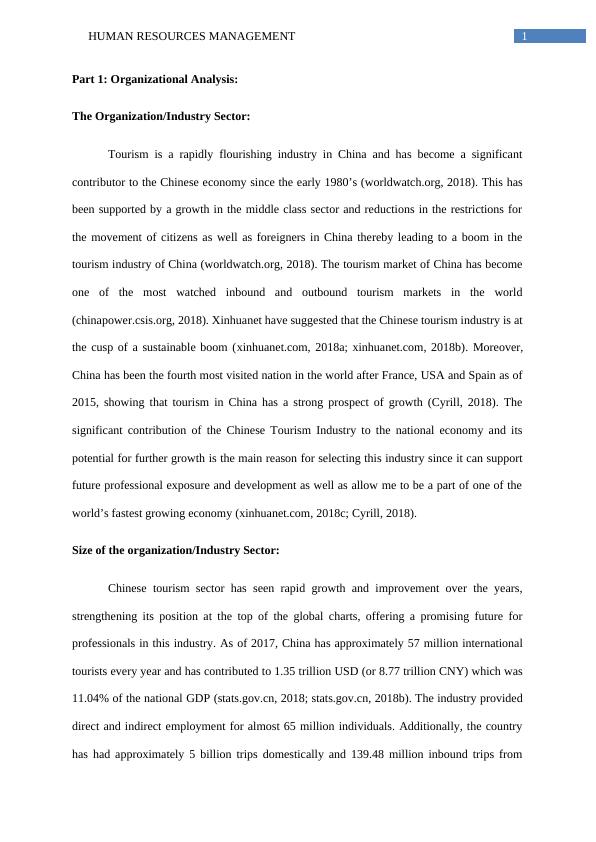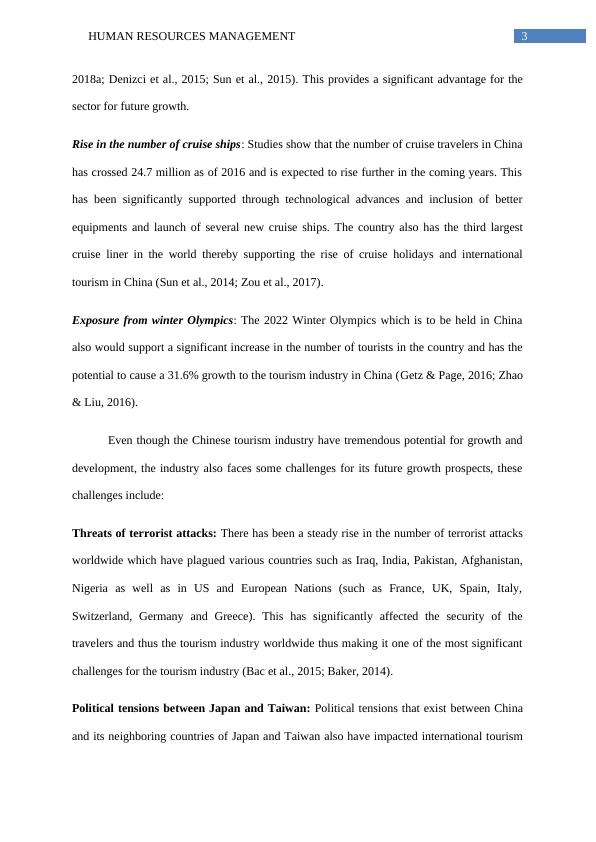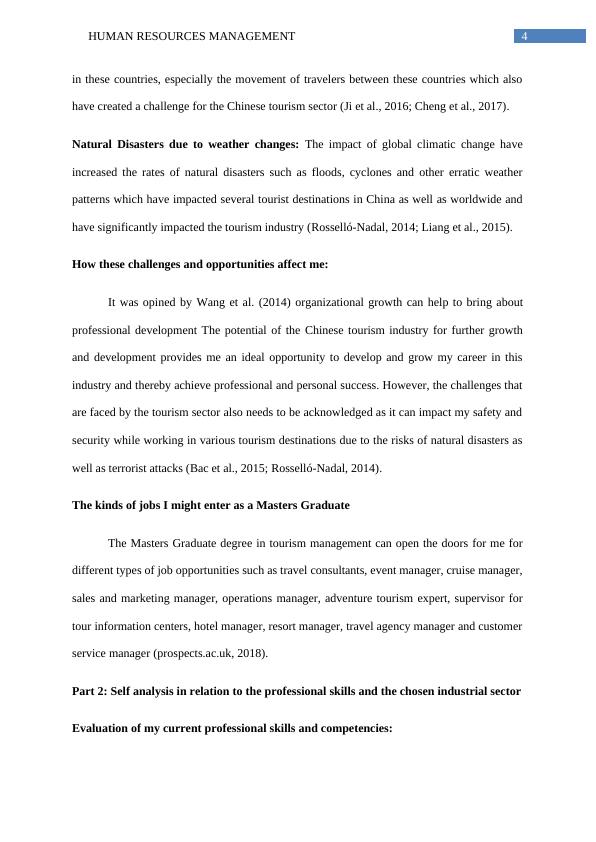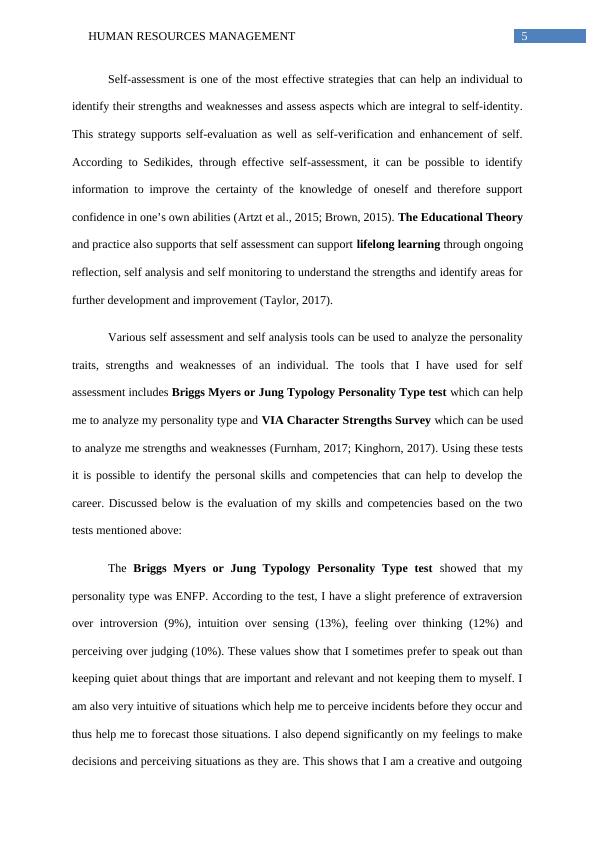Human Resources Management in the Chinese Tourism Industry
During this module, students are required to engage in a process of self-analysis and demonstrate progress in advancing specific professional skills and competencies. The assessment includes creating a personal and professional development programme, participating in activities to develop identified skills, reflecting on personal skills and responsibility in the context of business management, and demonstrating a range of personal and professional skills.
Added on 2023-05-28
About This Document
Human Resources Management in the Chinese Tourism Industry
During this module, students are required to engage in a process of self-analysis and demonstrate progress in advancing specific professional skills and competencies. The assessment includes creating a personal and professional development programme, participating in activities to develop identified skills, reflecting on personal skills and responsibility in the context of business management, and demonstrating a range of personal and professional skills.
Added on 2023-05-28
End of preview
Want to access all the pages? Upload your documents or become a member.






